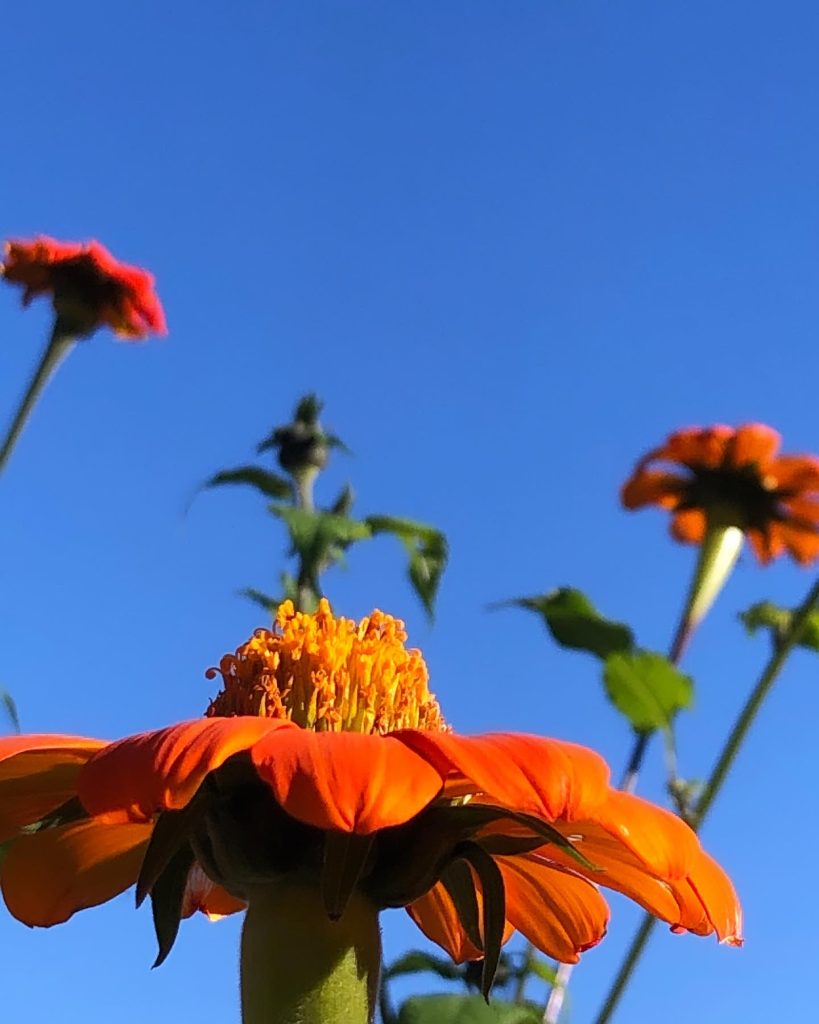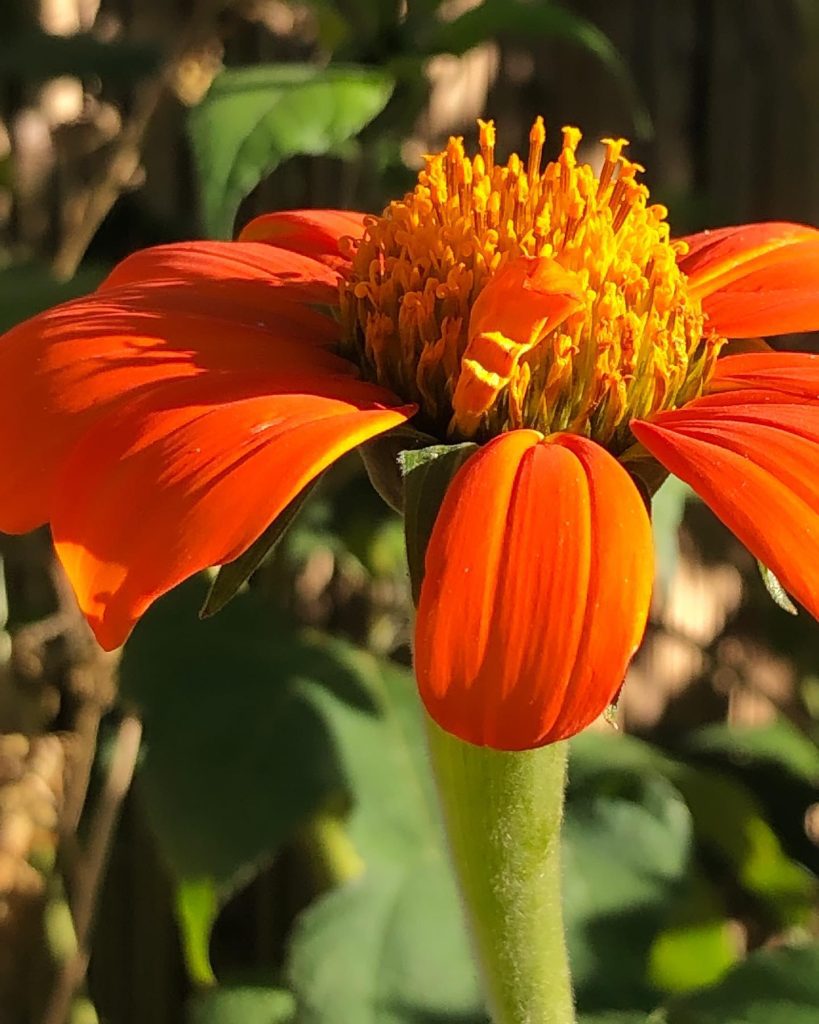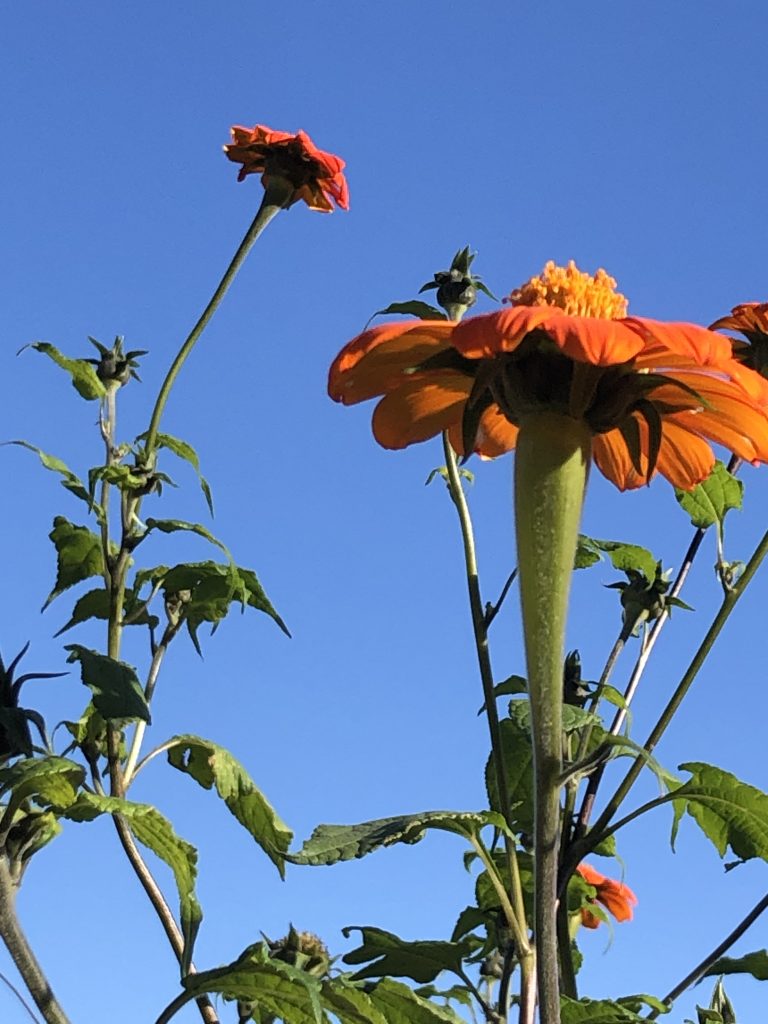Tithonias, also known as Mexican sunflowers, are vibrant and robust annual flowers that add a splash of color and attract pollinators to your garden. These sun-loving plants are known for their bright orange and red flowers and can thrive in various climates with minimal care. Here’s a comprehensive guide on how to grow tithonias successfully.
Understanding Tithonias
Varieties
Tithonia rotundifolia is the most common variety, often referred to as the Mexican sunflower. Popular cultivars include ‘Torch,’ known for its fiery orange blooms, and ‘Goldfinger,’ which boasts slightly smaller, golden flowers.
Characteristics
- Height: 3 to 6 feet, depending on the variety and growing conditions.
- Spread: 2 to 3 feet.
- Blooms: From mid-summer until the first frost.
- Attracts: Bees, butterflies, and birds.
Planting Tithonias
When to Plant
Tithonias are warm-season annuals and should be planted after the last frost. They thrive in temperatures between 70-90°F (21-32°C).



Location
- Sun: Full sun is essential. Tithonias need at least 6-8 hours of direct sunlight each day.
- Soil: Well-drained soil is crucial. While tithonias are not picky about soil type, they perform best in moderately fertile soil.
Planting from Seeds
- Start Indoors: Begin seeds indoors 6-8 weeks before the last frost date. Sow seeds in seed-starting mix and keep them in a warm, bright location.
- Transplanting: When seedlings have two sets of true leaves and all danger of frost has passed, transplant them outdoors. Space plants 2-3 feet apart to allow for ample growth and air circulation.
- Direct Sowing: In warmer climates, seeds can be directly sown outdoors after the last frost. Plant seeds 1/4 inch deep and keep the soil moist until germination.
Care and Maintenance
Watering
- Frequency: Water young plants regularly to establish roots. Once established, tithonias are drought-tolerant but appreciate weekly watering during dry spells.
- Method: Water at the base to avoid wetting foliage, which can lead to fungal diseases.
Fertilizing
- Type: Use a balanced, slow-release fertilizer at the time of planting.
- Frequency: Tithonias do not require heavy feeding. A light application of compost or fertilizer mid-season is sufficient.
Staking
Tall varieties may require staking to prevent them from falling over, especially in windy conditions. Use bamboo stakes or garden stakes and tie the plants loosely with garden twine.
Deadheading
Regular deadheading encourages continuous blooming. Remove spent flowers to prevent the plant from setting seed and to promote new flower production.
Pests and Diseases
Common Pests
- Aphids: These small insects can be controlled with insecticidal soap or by introducing beneficial insects like ladybugs.
- Spider Mites: Keep an eye out for fine webbing and treat infestations with neem oil or horticultural oil.
Diseases
- Powdery Mildew: Ensure good air circulation and avoid overhead watering. Treat affected plants with a fungicide if necessary.
- Root Rot: Prevent by ensuring well-draining soil and avoiding waterlogged conditions.
Harvesting and Uses
Cut Flowers
Tithonias make excellent cut flowers. Harvest blooms in the morning when they are fully open. Place stems in water immediately and strip the lower leaves to keep the water clean.
Wildlife Attraction
Tithonias are a magnet for pollinators. Planting them near vegetable gardens can help increase pollination rates for crops like tomatoes, cucumbers, and squash.
Conclusion
Growing tithonias is a rewarding experience for both novice and experienced gardeners. With their striking flowers and ability to attract beneficial wildlife, they are a vibrant addition to any garden. By following these simple steps, you can enjoy a long season of blooms and contribute to a thriving garden ecosystem. Happy gardening!
